
 |
|
|
Vegetables
Volume 62 Number 5 Date 05/25/2017 STRIPED CUCUMBER BEETLE - Beetle emergence has started and is expected to increase by mid-June. Protecting seedling and transplanted cucurbits with floating row covers, screens or cones can reduce the risk of bacterial wilt and is recommended for highly susceptible cucurbits such as cucumbers and melons. Any covering must be removed once plants begin to flower to permit pollinator access and ensure fruit set. A count of one beetle per plant for melons, cucumbers, and young pumpkins and five beetles per plant for less susceptible cucurbits (watermelon, squash, older pumpkins) signals a high risk of bacterial wilt if the beetle population is not controlled. Seedlings are more vulnerable both to feeding damage and disease and should be monitored at least twice weekly. BLACK CUTWORM - Routine inspection of seedling and recently transplanted vegetables for evidence of black cutworm infestation is advised during establishment now that larvae have reached the damaging late-instar stages. Cutworms feed on the stems of young plants at the soil line and can be extremely destructive where transplants are planted through black plastic or a similar weed barrier. Heat that accumulates under the plastic may attract and provide a protective covering for cutworms, making them more difficult to control. Beans, cabbage, carrots, celery, corn, lettuce, peas, peppers, potatoes and tomatoes are all at risk of larval injury. Minor cutworm feeding can usually be tolerated and damaged plants replaced. Insecticide rescue treatment using either sprays or granules in home gardens is usually impractical. Physical barriers such as tin cans or paper cups with bottoms removed are effective. Economic thresholds have been established for the following vegetables: SNAP BEANS: two larvae per row foot; POTATOES: four larvae per row foot; LEAFY GREENS: 3% of stand affected. COLORADO POTATO BEETLE - Adults are emerging in greater numbers and colonizing potato fields. Systemic insecticides applied at planting or emergence typically provide adequate control of the overwintered adults and first generation of larvae, but a foliar spray may also be needed if scouting indicates that early-season CPB pressure is high. The first of two foliar applications of an insect growth regulator or the biological insecticide Bt should be made at egg hatch and again 7-10 days later. IMPORTED CABBAGEWORM - First-generation larvae are appearing on cabbage transplants in west-central Wisconsin. Home gardens and larger cabbage plantings should be checked weekly for the yellow eggs laid singly on plants and for velvety green caterpillars with a yellow longitudinal stripe. The economic threshold for this pest in cabbage is 30% infestation at the transplant-to-cupping stages. -- Krista Hamilton, DATCP Entomologist 
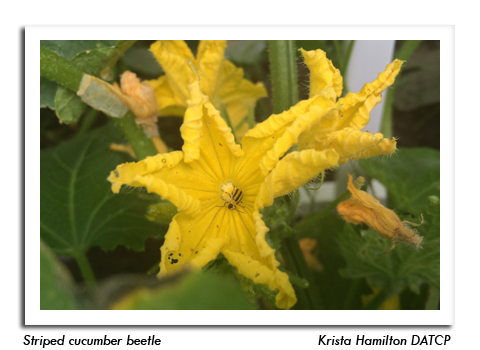
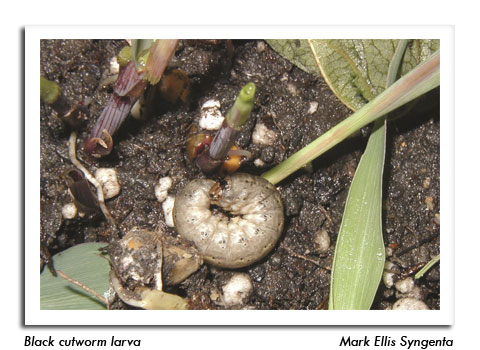
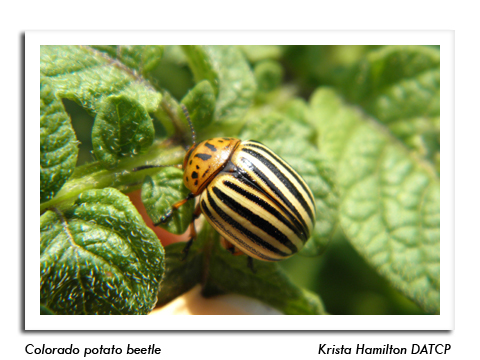
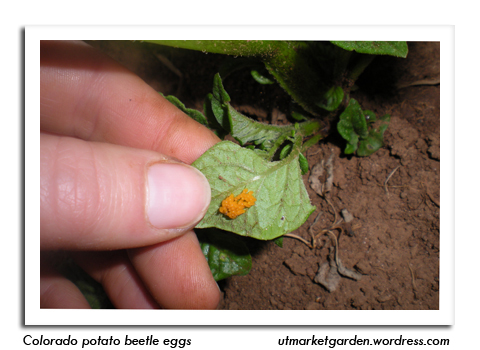
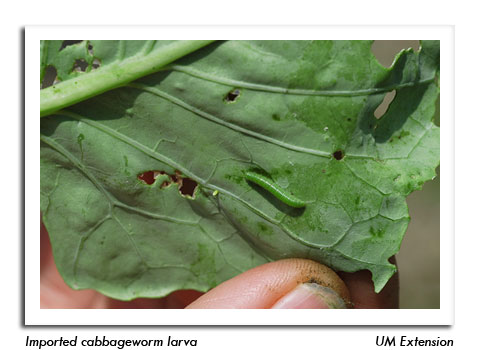
|
|
|